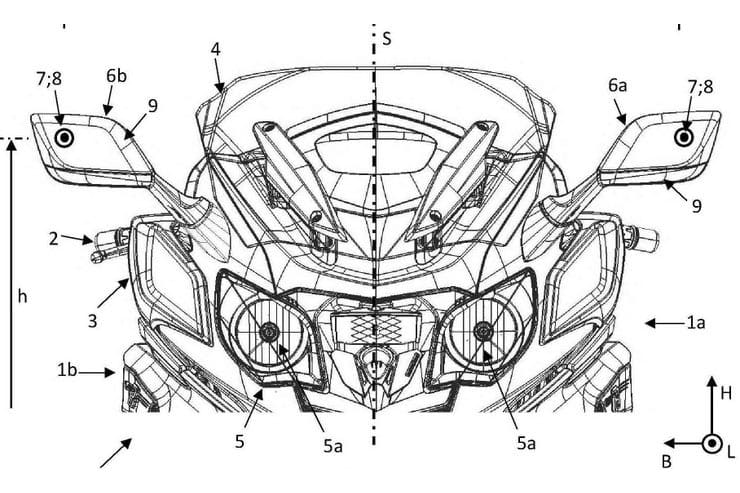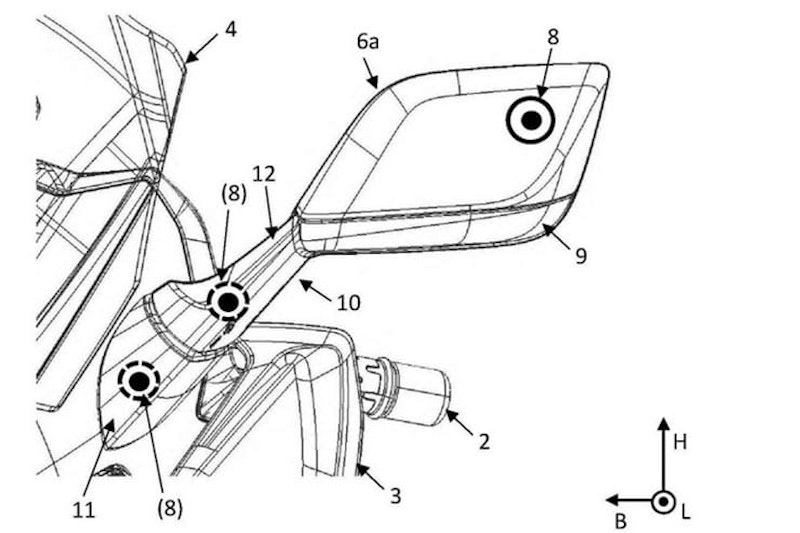BMW developing stereo cameras for bikes
By Ben Purvis
Motorcycle Journalist
20.03.2023
The last couple of years have seen car-style radar systems starting to appear on motorcycles and now it’s only a matter of time before cameras also become a key technology. BMW appears to be in the forefront with a new patent application for a stereoscopic camera setup.
Positioning a pair of cameras in the bike’s mirror cases – a K1600B is illustrated in the patent, but because the cameras are in the mirrors it’s a system that could be rapidly adopted by other models – the setup gets ‘vision’ with depth-perception, allowing the sensors to help with a host of technologies.
The initial aim of BMW’s design is to allow motorcycles to adopt LED matrix headlights; a system that’s already in use in many modern cars that eliminates the need to dip your lights when other vehicles approach at night. This year Kawasaki has added an auto-dipping headlight to the H2 SX, using a single camera behind the screen to recognise oncoming vehicles, but LED matrix systems are a significant step ahead of that technology.
As the name suggests, LED matrix lights use a whole array of LEDs to create the beam, with each LED responsible for a limited part of the spread of light. Allied to cameras and the right computer tech, that means parts of the headlight beam can be selectively dimmed by turning down the brightness of individual LEDs, tracking oncoming vehicles and reducing only the part of the headlight beam that’s directly hitting them. The result is a system that doesn’t dazzle other drivers but means you don’t have to compromise your own vision as the rest of the road remains fully illuminated.
Adding the system to bikes gives an extra layer of complexity, as the bike tilts in corners to add another dimension to the dimming requirements. Here, dual cameras which allow the system to build a ‘3d’ picture of its surroundings, help achieve the goal.
Although LED matrix lights are the main stated aim of BMW’s new patent, the dual cameras also offer additional possibilities. Some companies already use cameras instead of radar to allow adaptive cruise control, again using stereoscopic vision to gain the required depth perception to monitor the distance to vehicles ahead. The cameras will also allow the adoption of tech including traffic light recognition and road sign recognition, so the bike can monitor what the speed limit is and whether a light is red or green, as well as being able to spot brake lights on vehicles ahead for an early warning that they’re slowing down.
Since the technology is already real-world stuff on four wheels, this BMW patent is likely to be an accurate prediction of the future, transferring the same idea to bikes. Expect high-end machines like the K1600 and potentially the next-gen R1250GS (likely to be an R1300GS) that’s expected to debut later this year.
Share on social media:

